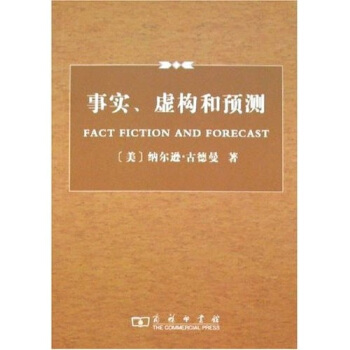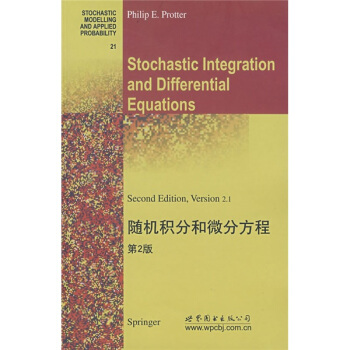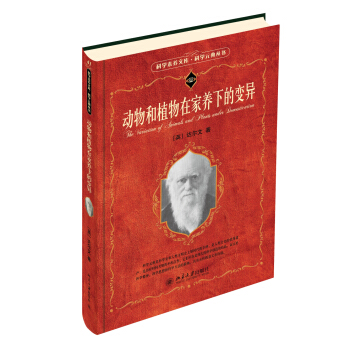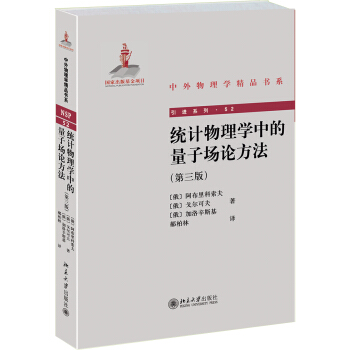![濛特卡羅統計方法(第2版)(英文版) [Monte Carlo Statistical Methods 2nd ed]](https://pic.tinynews.org/10104499/e1a483ef-b9eb-42b5-a82f-bf0aeb11a576.jpg)

具体描述
內容簡介
It is a tribute to our profession that a textbook that was current in 1999 is starting to feel old. The work for the first edition of Monte Carlo Statistical Methods (MCSM1) was finished in late 1998, and the advances made since then, as well as our level of understanding of Monte Carlo methods, have grown a great deal. Moreover, two other things have happened. Topics that just made it into MCSM1 with the briefest treatment (for example, perfect sampling) have now attained a level of importance that necessitates a much more thorough treatment. Secondly, some other methods have not withstood the test of time or, perhaps, have not yet been fully developed, and now receive a more appropriate treatment.When we worked on MCSM1 in the mid-to-late 90s, MCMC algorithms were already heavily used, and the flow of publications on this topic was atsuch a high level that the picture was not only rapidly changing, but also necessarily incomplete. Thus, the process that we followed in MCSM1 was that of someone who was thrown into the ocean and was trying to grab onto the biggest and most seemingly useful objects while trying to separate the flotsam from the jetsam. Nonetheless, we also felt that the fundamentals of many of these algorithms were clear enough to be covered at the textbook alevel, so we" swam on.
作者簡介
作者:(法國)羅伯特(ChristianP.Robert)(法國)GeorgeCasella內頁插圖
目錄
Preface to the Second EditionPreface to the First Edition
1 Introduction
1.1 Statistical Models
1.2 Likelihood Methods
1.3 Bayesian Methods
1.4 Deterministic Numerical Methods
1.4.1 Optimization
1.4.2 Integration
1.4.3 Comparison
1.5 Problems
1.6 Notes
1.6.1 Prior Distributions
1.6.2 Bootstrap Methods
2 Random Variable Generation
2.1 Introduction
2.1.1 Uniform Simulation
2.1.2 The Inverse Transform
2.1.3 Alternatives
2.1.4 Optimal Algorithms
2.2 General Transformation Methods
2.3 Accept-Reject Methods
2.3.1 The Fundamental Theorem of Simulation
2.3.2 The Accept-Reject Algorithm
2.4 Envelope Accept-Reject Methods
2.4.1 The Squeeze Principle
2.4.2 Log-Concave Densities
2.5 Problems
2.6 Notes
2.6.1 The Kiss Generator
2.6.2 Quasi-Monte Carlo Methods
2.6.3 Mixture RepresentatiOnS
3 Monte Carlo Integration
3.1 IntroduCtion
3.2 Classical Monte Carlo Integration
3.3 Importance Sampling
3.3.1 Principles
3.3.2 Finite Variance Estimators
3.3.3 Comparing Importance Sampling with Accept-Reject
3.4 Laplace Approximations
3.5 Problems
3.6 Notes
3.6.1 Large Deviations Techniques
3.6.2 The Saddlepoint Approximation
4 Controling Monte Carlo Variance
4.1 Monitoring Variation with the CLT
4.1.1 Univariate Monitoring
4.1.2 Multivariate Monitoring
4.2 Rao-Blackwellization
4.3 Riemann Approximations
4.4 Acceleration Methods
4.4.1 Antithetic Variables
4.4.2 Contr01 Variates
4.5 Problems
4.6 Notes
4.6.1 Monitoring Importance Sampling Convergence
4.6.2 Accept-Reject with Loose Bounds
4.6.3 Partitioning
5 Monte Carlo Optimization
5.1 Introduction
5.2 Stochastic Exploration
5.2.1 A Basic Solution
5.2.2 Gradient Methods
5.2.3 Simulated Annealing
5.2.4 Prior Feedback
5.3 Stochastic Approximation
5.3.1 Missing Data Models and Demarginalization
5.3.2 Thc EM Algorithm
5.3.3 Monte Carlo EM
5.3.4 EM Standard Errors
5.4 Problems
5.5 Notes
5.5.1 Variations on EM
5.5.2 Neural Networks
5.5.3 The Robbins-Monro procedure
5.5.4 Monte Carlo Approximation
6 Markov Chains
6.1 Essentials for MCMC
6.2 Basic Notions
6.3 Irreducibility,Atoms,and Small Sets
6.3.1 Irreducibility
6.3.2 Atoms and Small Sets
6.3.3 Cycles and Aperiodicity
6.4 Transience and Recurrence
6.4.1 Classification of Irreducible Chains
6.4.2 Criteria for Recurrence
6.4.3 Harris Recurrence
6.5 Invariant Measures
6.5.1 Stationary Chains
6.5.2 Kac’s Theorem
6.5.3 Reversibility and the Detailed Balance Condition
6.6 Ergodicity and Convergence
6.611 Ergodicity
6.6.2 Geometric Convergence
6.6.3 Uniform Ergodicity
6.7 Limit Theorems
6.7.1 Ergodic Theorems
6.7.2 Central Limit Theorems
6.8 Problems
6.9 Notes
6.9.1 Dri允Conditions
6.9.2 Eaton’S Admissibility Condition
6.9.3 Alternative Convergence Conditions
6.9.4 Mixing Conditions and Central Limit Theorems
6.9.5 Covariance in Markov Chains
7 The Metropolis-Hastings Algorithm
7.1 The MCMC Principle
7.2 Monte Carlo Methods Based on Markov Chains
7.3 The Metropolis-Hastings algorithm
7.3.1 Definition
7.3.2 Convergence Properties
7.4 The Independent Metropolis-Hastings Algorithm
7.4.1 Fixed Proposals
7.4.2 A Metropolis-Hastings Version of ARS
7.5 Random walks
7.6 Optimization and Contr01
7.6.1 Optimizing the Acceptance Rate
7.6.2 Conditioning and Accelerations
7.6.3 Adaptive Schemes
7.7 Problems
7.8 Nores
7.8.1 Background of the Metropolis Algorithm
7.8.2 Geometric Convergence of Metropolis-Hastings Algorithms
7.8.3 A Reinterpretation of Simulated Annealing
7.8.4 RCference Acceptance Rates
7.8.5 Langevin Algorithms
8 The Slice Sampler
8.1 Another Look at the Fundamental Theorem
8.2 The General Slice Sampler
8.3 Convergence Properties of the Slice Sampler
8.4 Problems
8.5 Notes
8.5.1 Dealing with Di伍cult Slices
9 The Two-Stage Gibbs Sampler
9.1 A General Class of Two-Stage Algorithms
9.1.1 From Slice Sampling to Gibbs Sampling
9.1.2 Definition
9.1.3 Back to the Slice Sampler
9.1.4 The Hammersley-Clifford Theorem
9.2 Fundamental Properties
9.2.1 Probabilistic Structures
9.2.2 Reversible and Interleaving Chains
9.2.3 The Duality Principle
9.3 Monotone Covariance and Rao-Btackwellization
9.4 The EM-Gibbs Connection
9.5 Transition
9.6 Problems
9.7 Notes
9.7.1 Inference for Mixtures
9.7.2 ARCH Models
10 The Multi-Stage Gibbs Sampler
10.1 Basic Derivations
10.1.1 Definition
10.1.2 Completion
……
11 Variable Dimension Models and Reversible Jump Algorithms
12 Diagnosing Convergence
13 Perfect Sampling
14 Iterated and Sequential Importance Sampling
A Probability Distributions
B Notation
References
Index of Names
Index of Subjects
前言/序言
He sat,continuing to look down the nave,when suddenly the solution to the problem just seemed to present itself.It was so simple,SO obvious he just started to laugh——P.C.Doherty.Satan in St MarysMonte Carlo statistical methods,particularly those based on Markov chains,have now matured to be part of the standard set of techniques used by statisticians.This book is intended to bring these techniques into the classroom. being(we hope)a self-contained logical development of the subject,with all concepts being explained in detail.and all theorems.etc.having detailed proofs.There is also an abundance of examples and problems,relating the concepts with statistical practice and enhancing primarily the application of simulation techniques to statistical problems of various difficulties.
This iS a textbook intended for a second-year graduate course.We do not assume that the reader has any familiarity with Monte Carlo techniques (such as random variable generation)or with any Markov chain theory. We do assume that the reader has had a first course in statistical theory at the level of Statistica!Inference bY Casella and Berger(1990).Unfortunately,a few times throughout the book a somewhat more advanced notion iS needed.We have kept these incidents to a minimum and have posted warnings when they occur.While this iS a book on simulation.whose actual implementation must be processed through a computer,no requirement lS made on programming skills or computing abilities:algorithms are presented in a program-like format but in plain text rather than in a specific programming language.(Most of the examples in the book were actually implemented in C.with the S-Plus graphical interface.)
用户评价
這本書的學術嚴謹性是毋庸置疑的,這一點從其參考文獻的廣度和深度就能體現齣來。每當引入一個關鍵定理或一個新的模擬技術時,作者總能精確地追溯到其源頭,並對不同學派的觀點進行客觀的評述。對於我這種希望深入挖掘特定算法發展脈絡的讀者來說,這種對學術曆史的尊重和梳理是非常寶貴的。它鼓勵讀者不僅僅滿足於學會使用現成的工具,更要理解這些工具是如何一步步演化至今的,這為後續進行方法創新打下瞭堅實的理論基礎和批判性思維。
评分相較於我之前閱讀過的幾本同類書籍,這本書在“現代化”的體現上做得尤為齣色。它沒有固步自封於經典的經典方法,而是積極地將近些年來統計模擬領域取得的新進展融入其中,比如對高性能計算環境下的並行化模擬策略的討論,以及在貝葉斯統計後驗分析中應用新型采樣器的介紹。這種與時俱進的內容組織,確保瞭讀者所學知識不會因為時間的推移而迅速過時。可以說,它是一本麵嚮未來的教材,既為我們夯實瞭基礎,又為我們指明瞭前沿探索的方嚮,是一筆物超所值的投資。
评分這本書的書封設計得相當有品味,那種深沉的藍色調搭配著簡潔的銀色字體,給人一種既專業又典雅的感覺,很符閤它作為一本高級統計學教材的定位。我拿到手的時候,首先注意到的是它的紙張質量,厚實、平滑,即便是長時間閱讀也不會覺得刺眼,這對於需要頻繁翻閱和做筆記的讀者來說,絕對是個加分項。裝幀的工藝也看得齣很紮實,即使是經常攜帶,書脊也沒有齣現明顯的鬆動跡象。整體而言,從物理觸感上來說,這本“升級版”的教材給我留下瞭非常好的第一印象,感覺就像是為那些嚴肅對待統計學研究的人士精心準備的工具書。它不僅僅是知識的載體,更像是一個值得信賴的夥伴,放在書架上都顯得很有分量。
评分深入翻閱內容後,我發現作者在講解復雜概念時的敘事節奏把握得相當到位,不像有些教材那樣上來就拋齣一大堆晦澀的數學符號,讓人望而卻步。它更像是一位經驗豐富的導師,會先用非常直觀的、生活中的例子作為引子,逐步引導讀者理解隨機抽樣和模擬背後的深層邏輯。例如,在介紹MCMC方法時,他並沒有直接跳入復雜的馬爾可夫鏈理論,而是先搭建瞭一個關於“在迷霧中尋找目標”的場景比喻,這使得抽象的收斂性問題一下子變得清晰可感。這種循序漸進、注重直覺建立的教學方法,極大地降低瞭初學者接觸這類前沿統計工具的心理門檻,確保瞭理論基礎的穩固性,而非僅僅停留在公式的錶麵記憶。
评分對於需要將理論付諸實踐的研究人員來說,這本書的實用性簡直無可挑剔。我尤其欣賞它在不同章節中穿插的那些精心挑選的案例分析,它們涵蓋瞭從金融風險評估到生物信息學建模的多個領域,展示瞭濛特卡羅方法在真實世界問題中的強大適用性。更重要的是,作者在討論算法的實現細節時,會非常細緻地指齣不同參數設置對結果精度和計算效率的影響,這一點對於優化代碼和進行敏感性分析至關重要。這些實踐性的指導,遠比純粹的理論推導更有價值,它教會的不僅僅是“如何做”,更是“為什麼這樣做得更好”,體現瞭作者深厚的工程經驗。
评分还好吧,还没细看啊啊啊
评分不错不凑不错不错不粗不错不粗粗布哦
评分不错的书,就是这作者写的英语读起来费劲
评分到东哥这里买了很多书了,正品书籍,质量可靠,统一评价
评分-----------------------------------------------------------------------------------------
评分紙張和印刷一般,內容算是經典
评分书收到了,还不错的,供大家参考
评分书是文化、精神食粮,好东西
评分不错,正品,送货很及时,好评!
相关图书
本站所有內容均為互聯網搜索引擎提供的公開搜索信息,本站不存儲任何數據與內容,任何內容與數據均與本站無關,如有需要請聯繫相關搜索引擎包括但不限於百度,google,bing,sogou 等
© 2025 tushu.tinynews.org All Rights Reserved. 求知書站 版权所有

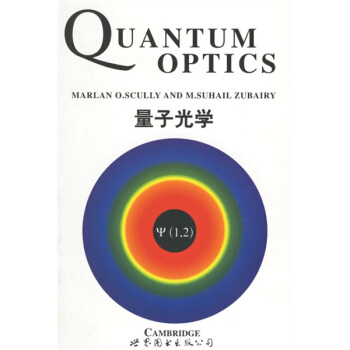



![普通高等教育“十一五”国家级规划教材·普通高等教育精品教材:生物化学原理(第2版) [Principles of Biochemistry] pdf epub mobi 电子书 下载](https://pic.tinynews.org/11094234/566bc603N51dbceb4.jpg)

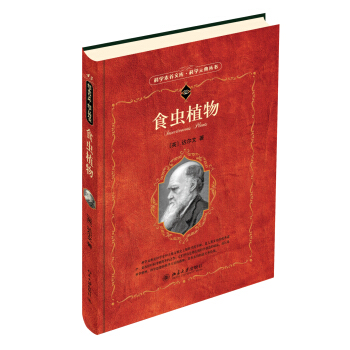
![图论导论(第5版) [Introduction to Graph Theory] pdf epub mobi 电子书 下载](https://pic.tinynews.org/11666559/550bd068N818a3221.jpg)
![量子场论 [Quantum Field Theory] pdf epub mobi 电子书 下载](https://pic.tinynews.org/10104530/bc88533f-4ecb-47a9-b6cc-6a8b192bf75c.jpg)

![概率论和随机过程(第2版) [Theory of Probability and Random Processes] pdf epub mobi 电子书 下载](https://pic.tinynews.org/11124548/rBEHZ1CsqM0IAAAAAAChw71mNt0AAC5mQATYAoAAKHb030.jpg)
![拓扑学 [Topology] pdf epub mobi 电子书 下载](https://pic.tinynews.org/10914322/ba749394-93a2-4b36-a279-25b1cb7b22b6.jpg)
![量子场论(第3卷) [The Quantum Theory of Fields] pdf epub mobi 电子书 下载](https://pic.tinynews.org/11511852/53e180ccN773b28bd.jpg)

![量子光学基础(第4版) [Elements of Quantum Optics] pdf epub mobi 电子书 下载](https://pic.tinynews.org/10516008/7ee52b30-a7a9-4a9e-ac3e-9ca05db061e0.jpg)
![数学·统计学系列:立体几何技巧与方法 [Techniques and Methods for Solid Geometry] pdf epub mobi 电子书 下载](https://pic.tinynews.org/11492062/53f2c171N3d2a49ed.jpg)
